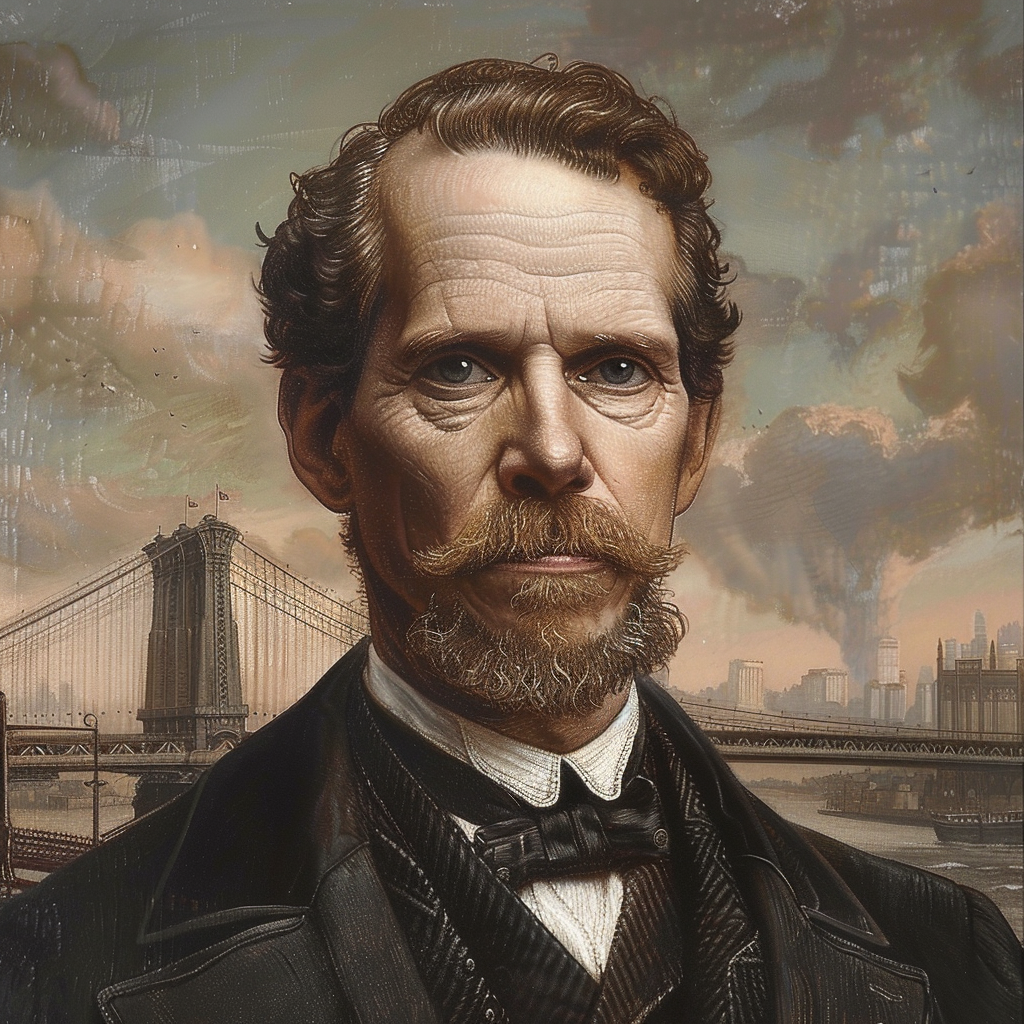A Prussian Engineer Immigrates and Builds an American Icon…

Not all great American entrepreneurs were born here. John A. Roebling wasn’t. Roebling was born in 1806 in Mühlhausen, Prussia, a little town at almost the exact center of modern-day Germany.
Recognizing his genius, Roebling’s mother enrolled him in math and science classes early. In college, in addition to science and math he studied architecture, engineering, bridge construction, hydraulics and philosophy! He took an engineering job in 1825, working for the Prussian government designing and building military roads. It was here that Roebling would start thinking about suspension bridges, something he would do much thinking about for the rest of his life.
In 1831 Roebling, along with his brother and a number of other engineers left Prussia in order to seek their fortunes in the United States, which offered engineers (and many others) opportunities they could not find at home. Roebling and his brother, Carl, purchased 1,500 acres in Pennsylvania with the intention of creating a settlement for the German community, giving it the very German sounding name, Saxonburg.
The hoped for flood of immigrants never materialized however and setting engineering to the side, Roebling became a farmer. After six years of farming and the death of his brother, Roebling decided he really didn’t like farming. As such he hung up his overalls and looked back to engineering.
Once again he took a government job, this time working on railroad bridges and canals for the state of Pennsylvania. It was now that Roebling would return to suspension bridges. In looking at the increasing sophistication of and demands on suspension bridges, he started to look at alternatives to the hemp strand ropes that were common at the time and offered limited support and strength. He remembered something he had read previously about wire ropes and decided to start manufacturing wire ropes himself.
In 1844 Roebling, the fledgling entrepreneur, won the contract to replace the wooden canal aqueduct across the Allegheny River in Pittsburg, Pennsylvania. He replaced the wooden structure with a seven span bridge supported by his tightly wrapped cable wires.
Over the next twenty years Roebling would build a series of bridges (some with double decks, carrying both vehicles and trains) and aqueducts of increasing size and complexity across the Northeast. This period would culminate with the Cincinnati-Covington Bridge, connecting Cincinnati, Ohio and Covington, Kentucky. Completed in 1867, it was the world’s longest suspension bridge.
Roebling’s increasing feats were in part made possible by his wire cables, and in 1848 he established the John A. Roebling’s Sons Company in Trenton, New Jersey which greatly increased his manufacturing capacity. Not only would Roebling’s company become the foremost builder of suspension bridges in the world during the 19th century, the plant would manufacture wire used in everything from elevators to cable cars to construction to electric power lines and eventually airplanes. Among the bridges Roebling’s plant manufactured wire for were the George Washington Bridge connecting New York and New Jersey and the Golden Gate Bridge across the San Francisco Bay.
But it was as an engineer that Roebling made his mark, and as an engineer it is how he is best remembered… for a bridge finished years after his death: The Brooklyn Bridge. Construction on Roebling’s design started in 1870, the year after Roebling died from complications resulting from an accident incurred while during surveys for the bridge. His son Washington Roebling would step in and complete the bridge, which would open on May 24, 1883 and would be the world’s longest suspension bridge for the next 20 years.
Roebling’s genius was both as an engineer and a businessman, and millions of people around the world enjoy the fruits of his genius every day, a century and a half after his death. He like many others saw that America was the land of opportunity and decided to make it his home. Anyone who has ever walked across the Brooklyn or Golden Gate bridges is grateful he did…
Further reading:
https://ellarslie.org/john-a-roebling-sons-company/
https://en.wikipedia.org/wiki/Brooklyn_Bridge#History
https://en.wikipedia.org/wiki/John_A._Roebling
